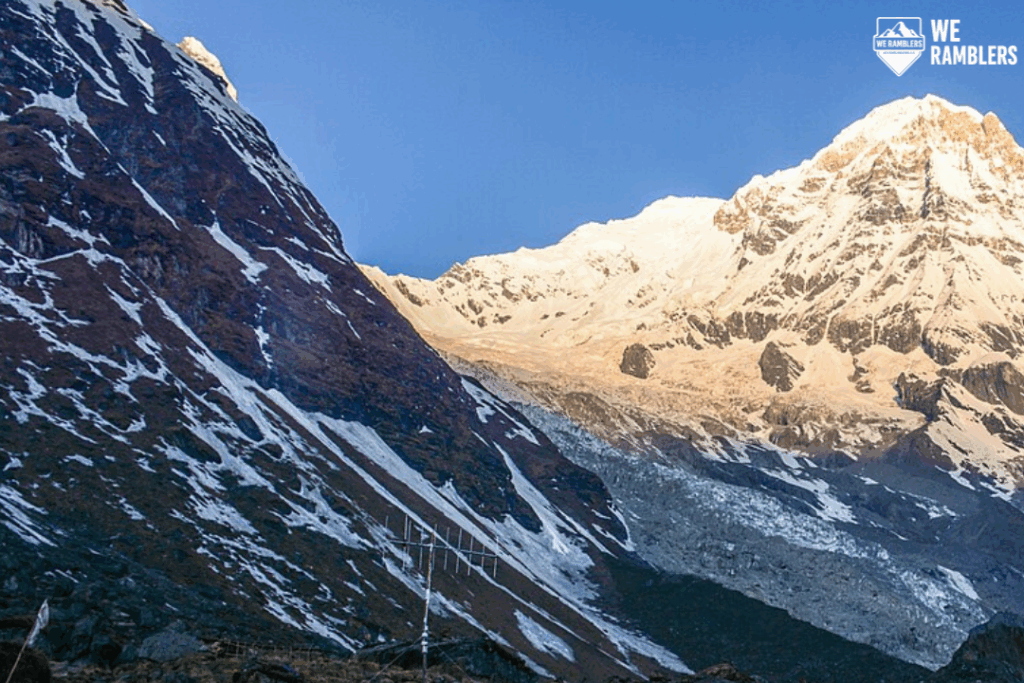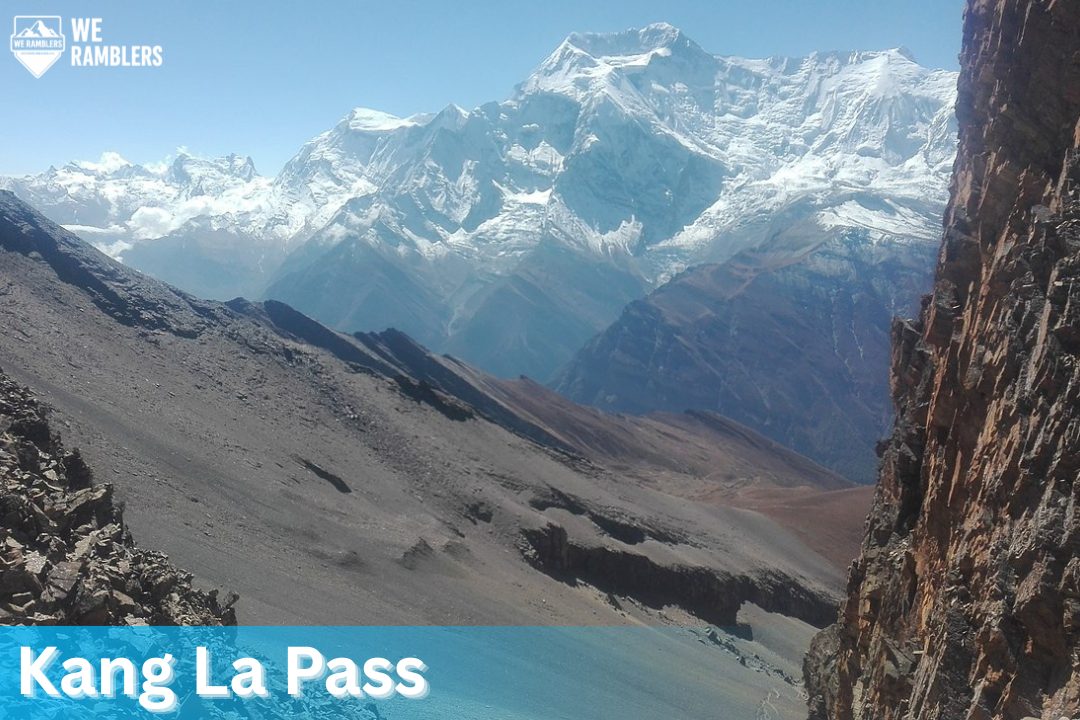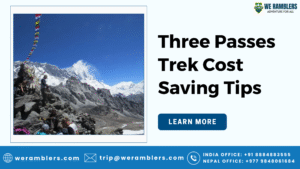Kang La Pass Trek: The Hidden Gateway to Annapurna’s Wild North
High in the remote northern reaches of the Annapurna region treks, hidden from the well-trodden paths of the Annapurna Circuit, lies the spectacular Kang La Pass. Sitting at an elevation of approximately 5,320 meters, this towering mountain pass serves as a secret doorway into one of the most pristine and culturally rich corners of the Nepal Himalayas. The Kang La Pass Trek offers adventurers a chance to explore the isolated Nar Phu Valley trek, a region that remains relatively untouched even as trekking in Nepal grows increasingly popular.
Unlike many heavily trafficked routes, this offbeat Himalayan trek offers a profound sense of solitude, blending raw alpine beauty with ancient Tibetan culture. Here, nature reigns supreme, and travelers often encounter herds of blue sheep, Himalayan griffons soaring overhead, and the occasional snow leopard tracks. For serious trekkers, explorers, and high-altitude enthusiasts, the Kang La Pass Trek is more than just a journey—it’s a rare opportunity to experience one of the most remote treks in Nepal, where breathtaking landscapes and centuries-old villages await those willing to venture off the beaten path.
Why Kang La Pass Is Unique
While many travelers flock to Nepal’s famous Thorong La, few realize that the Kang La Pass offers an equally rewarding, if not more intimate, experience. Nestled deep in the Nar and Phu valleys, this trail connects the ancient Nar and Phu villages to the renowned Manang Valley via an exhilarating alpine crossing.
The views from the high mountain pass Nepal are nothing short of breathtaking. Trekkers are treated to a sweeping panorama of Himalayan giants, including Annapurna II, Gangapurna, and Tilicho Peak. Unlike crowded routes, here you’ll find quiet trails, vibrant prayer flags fluttering in the wind, and a sense of wilderness that defines true adventure. The route also allows trekkers to observe yak caravans, traditional stone-walled fields, and cascading waterfalls, offering unmatched variety. This blend of solitude, cultural depth, and raw nature makes the Kang La Pass Trek one of the most rewarding remote treks in Nepal.
Best Time to Trek Kang La Pass
The best time to trek Kang La Pass aligns with Nepal’s two primary trekking seasons: spring (March to May) and autumn (September to November). During these months, trekkers enjoy clear skies, stable weather, and moderate temperatures, which are crucial when crossing such a high mountain pass Nepal.
Spring brings vibrant wildflowers and blossoming rhododendrons, while autumn offers crystal-clear mountain vistas. Attempting the trek during the monsoon (June to August) is risky due to heavy rains, slippery trails, and landslides. Winter (December to February) can transform the Kang La Pass into a snowbound, impassable barrier, making it crucial to avoid this season to prevent being caught in dangerous snow-blockades. Early autumn also provides opportunities to witness local harvest festivals in Nar and Phu villages, adding a cultural layer to the experience.
Nar Phu Valley and the Kang La Route
The Nar Phu Valley trek is part of a restricted area within the Annapurna Conservation Area, requiring special permits and careful planning. This secluded region opened to foreign trekkers only in 2003, preserving its pristine landscapes and ancient cultures.
The typical Nar Phu trek itinerary begins at Koto, following the route:
- Koto → Meta → Phu → Nar → Kang La to Manang route.
Starting in Koto, trekkers gradually ascend through pine forests, narrow gorges, and suspension bridges to Meta. From Meta, the trail winds towards Phu village, an ancient settlement where time seems to stand still. The route continues to Nar, offering expansive high-altitude plateaus and the unique opportunity to interact with semi-nomadic yak herders. After spending acclimatization nights in Phu and Nar, trekkers tackle the steep climb up to Kang La Pass, which eventually descends into Manang, reconnecting with the classic Annapurna Circuit. The stark isolation and the challenging ascent add to the overall sense of accomplishment that defines this journey.
Cultural Depth: Nar and Phu Villages
The Nar and Phu villages offer a rich tapestry of Tibetan Buddhist heritage, rooted in ancient trade routes that once connected Nepal and Tibet. Here, centuries-old monasteries, intricately carved chortens, and lines of colorful prayer wheels tell the story of a community that has preserved its traditions against the backdrop of harsh mountain life.
Travelers engaging in cultural trekking Nepal will find themselves immersed in local festivals, prayer ceremonies, and the hospitality of villagers who continue to practice their ancestral way of life. The villagers still rely on subsistence farming, weaving, and yak herding, while monks chant ancient mantras within the monasteries. The unique blend of Tibetan dialects, handcrafted stone houses, and vibrant festivals like Yartung make this cultural encounter truly memorable.
Acclimatization and Altitude
Given its significant elevation, proper acclimatization is critical on the Kang La Pass Trek. Trekkers typically spend multiple nights in Phu (4,080m) and Nar (4,110m) to help their bodies adjust to the thinning air before attempting the high mountain pass Nepal.
The risk of AMS (Acute Mountain Sickness) is real on these remote treks in Nepal, especially as one ascends beyond 4,500 meters. Key safety practices include:
- Ascending slowly and steadily
- Staying well-hydrated
- Scheduling adequate rest days
- Recognizing early symptoms of AMS
- Considering preventative medications like Diamox
The dry mountain air and significant temperature fluctuations require trekkers to maintain proper nutrition and monitor their physical condition closely. Consulting with guides for daily health checks can significantly reduce the risk of severe altitude sickness.

Trek Difficulty and Fitness Required
The Kang La Pass Trek is considered a strenuous but non-technical adventure. While climbers don’t need ropes or specialized mountaineering gear, the trek demands strong cardiovascular fitness, mental endurance, and prior high-altitude trekking experience.
Trekkers face long hiking days, cold temperatures, potential high winds, and a steep final climb to the pass. The descent into Manang can also be physically taxing on tired legs. Overall, this route is best suited for moderate to experienced hikers who are adequately prepared for the rigors of adventure trekking in Nepal. Pre-trek physical training involving uphill hiking, strength conditioning, and cardiovascular workouts will greatly improve both endurance and enjoyment during the journey.
Nar Phu Trek Permits and Logistics
Since the Nar Phu Valley trek falls within a restricted zone, trekkers must obtain a Nar Phu restricted area permit in addition to the standard Annapurna Conservation Area Permit (ACAP).
Here’s what you need:
- Nar Phu restricted area permit: Approx. USD 90–100 for the first 7 days
- ACAP permit: Approx. USD 30
- Valid passport and passport-sized photos
Permits are available in Kathmandu or Pokhara, and trekking with a licensed guide is mandatory due to government regulations. Guides not only help navigate the remote terrain but also provide critical local knowledge and safety support. Permit regulations are strictly enforced, and unregistered trekkers are frequently turned back at police checkpoints, making advanced preparation essential.
Packing Essentials for Kang La Pass
Given the challenging nature of the trek, thorough preparation is key. Essential items include:
- Layered clothing for fluctuating temperatures
- Insulated jacket and waterproof shell
- Sturdy, well-broken-in trekking boots
- Trekking poles and optional microspikes (depending on snow)
- Sleeping bag rated for sub-zero temperatures
- Water purification system (tablets or filters)
- Essential documents (permits, ID, insurance)
- Headlamp, snacks, solar charger, and first-aid kit
Additionally, carrying high-calorie energy bars, sun protection (sunglasses, lip balm, sunscreen), and blister care products can greatly enhance comfort. Lightweight, moisture-wicking clothing will help regulate body temperature, while compact gear keeps your backpack manageable on the demanding climbs.
Accommodation and Food on the Trail
Along the Nar Phu Valley trek, basic teahouses provide essential accommodations in villages like Meta, Nar, and Phu. While these lodges are far more rustic than those on the main Annapurna Circuit, they offer warm shelter and hearty meals.
Typical meals include Tibetan-style tsampa porridge, thukpa (noodle soup), momos (dumplings), and butter tea to combat the high-altitude chill. During peak seasons, it’s advisable to pre-book where possible, or carry light emergency provisions, as options are limited and unpredictable in this isolated region. While internet access and charging points are scarce, travelers are rewarded with stunning starlit skies and the chance to disconnect entirely from modern life.
Route Extension to Annapurna Circuit
Upon descending from the Kang La to Manang route, trekkers seamlessly join the famous Annapurna Circuit, opening the door to further explorations. From Manang, one may:
- Continue westward to cross Thorong La (5,416m)
- Take a detour to the stunning Tilicho Lake
- Descend southwards to Pisang and Chame
This extension makes the Kang La Pass Trek a natural complement to longer Annapurna region treks, blending quiet isolation with Nepal’s classic trekking highlights. The junction at Manang also provides opportunities to resupply, enjoy better accommodations, and acclimatize further before attempting additional high-altitude challenges.
Final Thoughts and Reflections
Crossing the Kang La Pass is not simply about conquering a summit; it’s about immersing oneself in the raw wilderness, ancient culture, and remote beauty that defines adventure trekking in Nepal. The path less traveled through Nar and Phu offers an emotional journey filled with breathtaking vistas, quiet moments, and a profound connection to both nature and local heritage.
Few treks offer such a perfect balance between physical challenge and cultural immersion. For those seeking something beyond the usual routes, the Kang La Pass Trek stands as a powerful reminder that some of the world’s greatest treasures lie hidden off the beaten track, waiting for the bold and prepared explorer to discover them. This is more than a trek—it’s a personal pilgrimage into one of Nepal’s last great frontiers.
Trekking Kang La Pass with We Ramblers
For those planning the Kang La Pass Trek, We Ramblers offers expertly guided trekking packages that ensure safety, comfort, and an unforgettable experience. With experienced local guides, well-planned itineraries, and full logistical support, we help trekkers confidently navigate this challenging adventure trekking in Nepal. Our personalized services make exploring the Nar Phu Valley trek both accessible and enriching. Contact us today to learn more about our packages.





